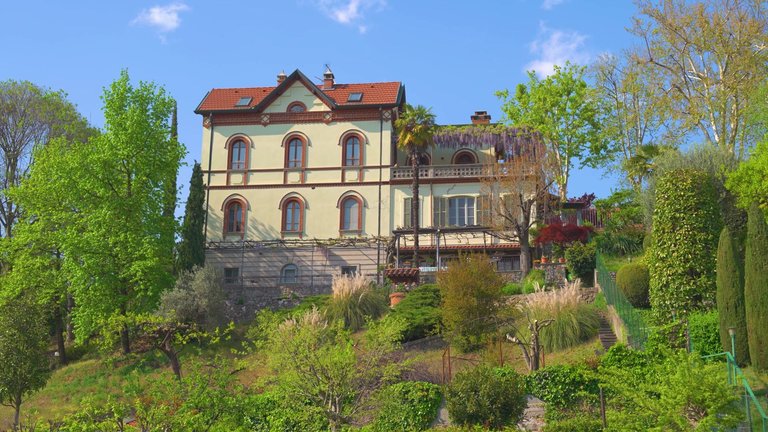
Hello friends. I invite you to a new journey. About 150 years ago, an Italian industrialist Christopher Crespi decided to build an ideal city. What came of his dream? Let me tell you. Crespi created a city for his workers, where everything they needed for a comfortable life was within reach. You might call it an innovative idea or a utopia turned into reality. He built separate villas for artisans and cozy homes with gardens for workers, where families could grow vegetables. After a long day at the factory, workers were greeted not by a concrete jungle but by peace and serenity.
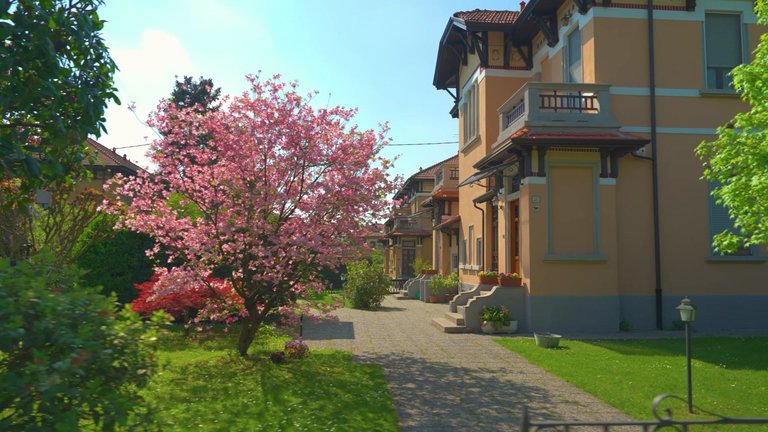
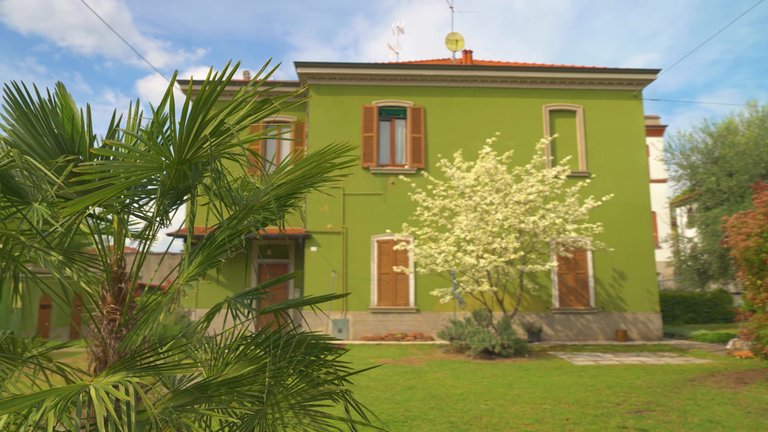

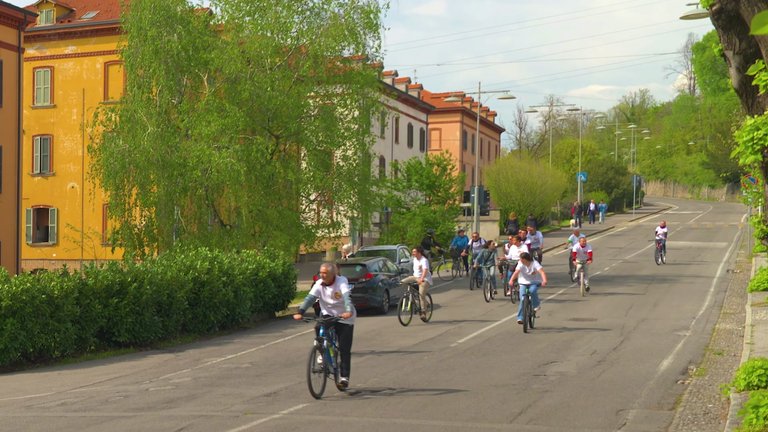
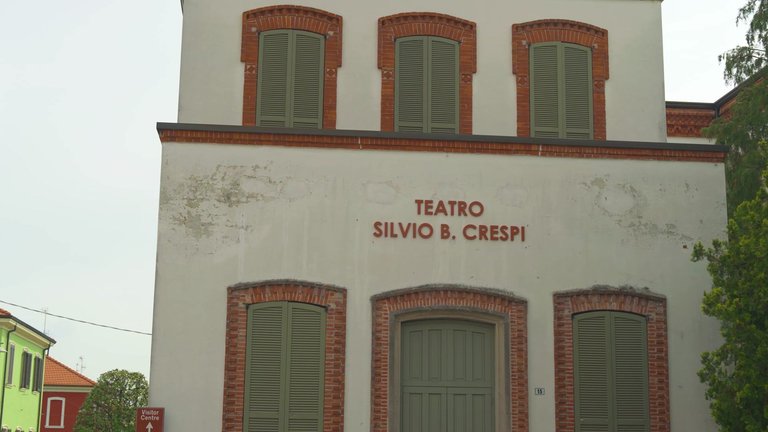
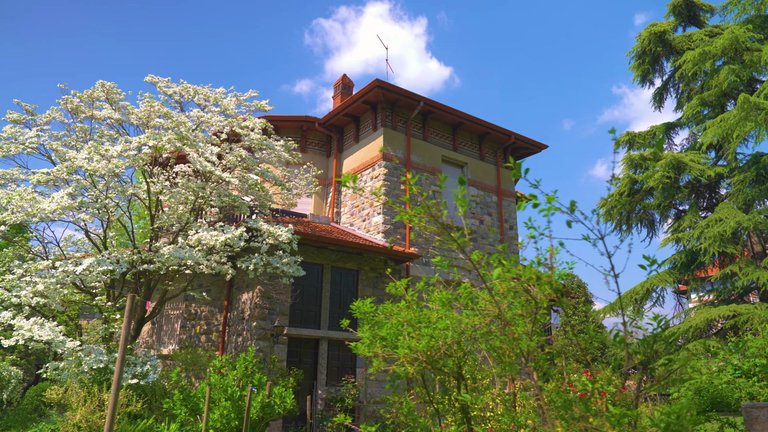
Free daycare and schooling for all children. Free sports, theater and cinema for everyone. A place meticulously designed to ensure happiness. But always under watchful eyes. What is this place? A paradise for workers or a gilded cage? What secrets does Crespi d'Adda Village hold?
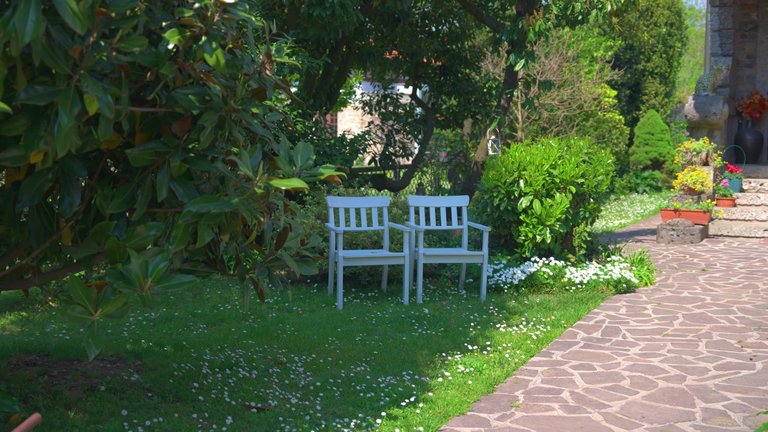
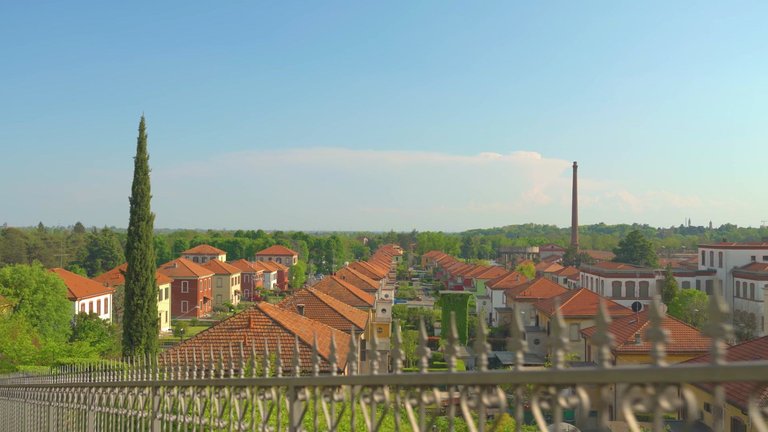
Our protagonist is this kindly looking, mustachioed man, a scion of a textile industrialist family. His grandfather was also in the fabric business. As a young man, Christopher worked with his father and brothers but always dreamed of creating his own project.
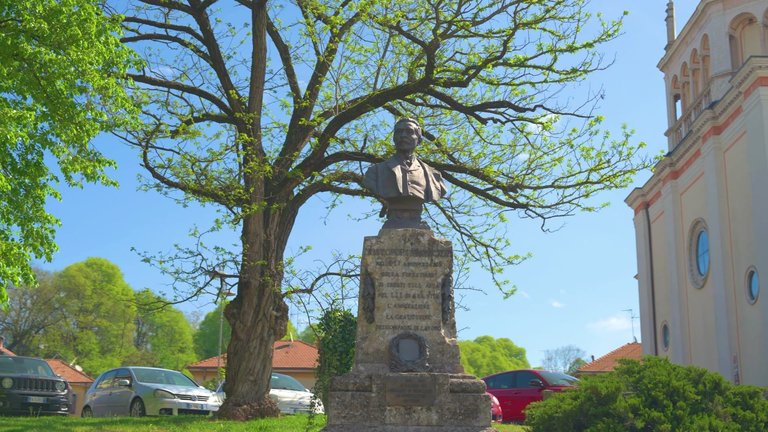
It all began in 1878. That year Christopher Crespi purchased a vast, triangular piece of undeveloped land at the confluence of the Adda and Brembo rivers, just 35 km from Milan. He also secured rights to use water from the Adda River. The river's power would be converted into electricity to drive the insatiable machines of the future factory. But the factory was only half the equation, workers were needed. The surrounding area was home to scattered villages, none nearby. While Crespi was unafraid of training local villagers, distance posed a significant challenge. To address this, he managed to construct three simple houses with 12 apartments near the factory.
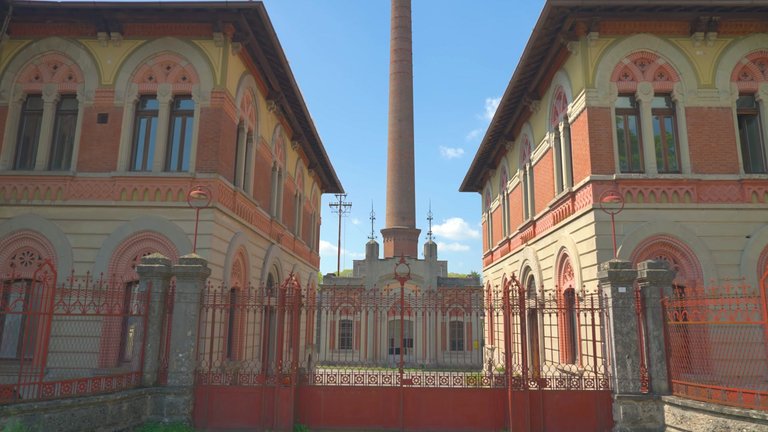
However, his son Silvio returned from an internship in England and proposed changes to the workers housing plan after seeing the initial construction. He argued that families living too close together could lead to unrest, arguments or disputes. According to Silvio, an ideal worker's house should accommodate one or two families and include a green garden. At just over 20 years old Silvio joined the factory's management and influenced its course.
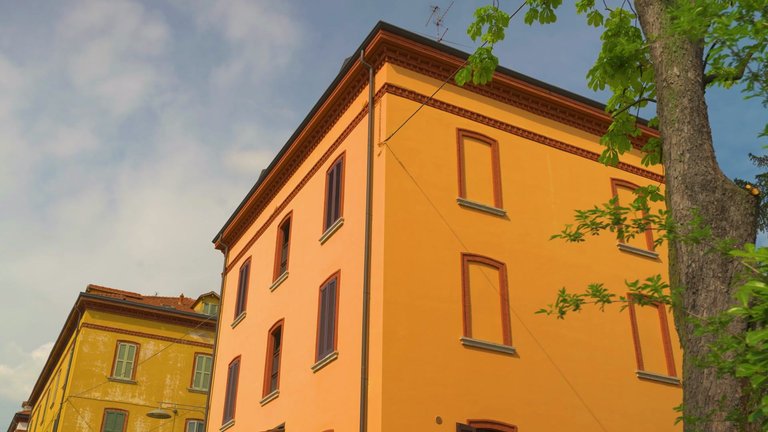
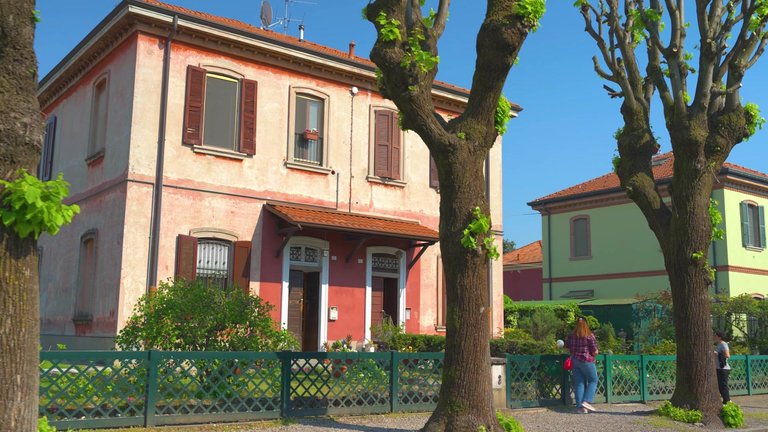
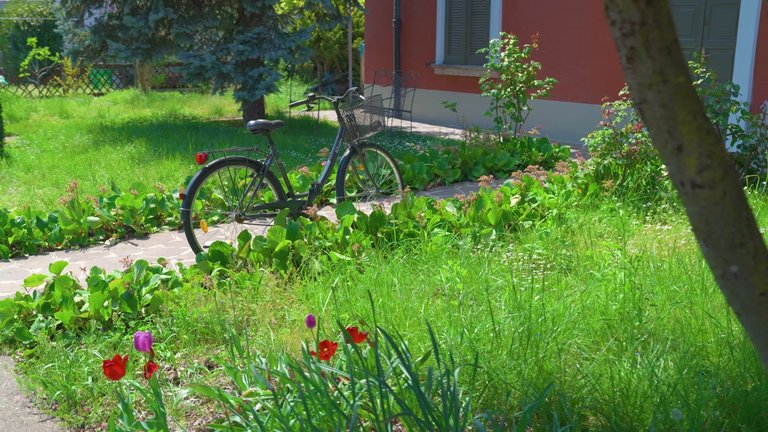
Soon the town's straight streets were lined with neat but spacious two-story houses. Each home contained two, three or four-room apartments. In front of each house was a garden, behind a vegetable patch. To move into one of these homes a family member simply needed to work at the factory. A small monthly rent was deducted from wages, while maintenance costs were covered by the company. Crespi even held a contest for the most beautiful garden, though no prizes are given today, the tradition of maintaining well-kept gardens continues.
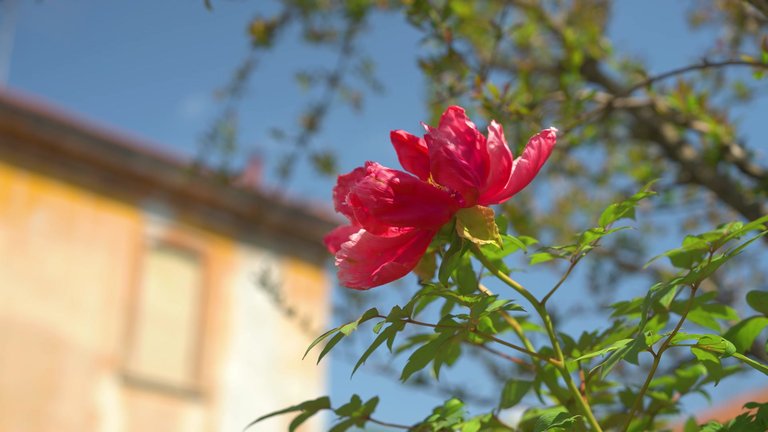
The houses were modern for their time, but some amenities were lacking. As workers families grew, women faced the burden of carrying heavy basins of laundry to the river in all weather conditions. To alleviate this, Crespi built a laundry facility right in the village square, supplied with water heated by the factory’s turbines. Lucky for us, we live in the age of washing machines.
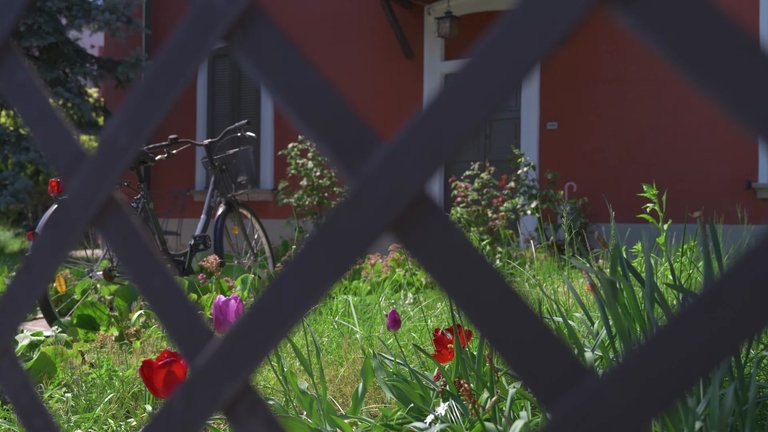
As you can see, each house had unique features, but all the fences around them were identical. This was no coincidence. Initially Italy imported cotton from America. However, during the American Civil War, supplies were disrupted and Crespi turned to Africa for cotton. The cotton was transported wrapped in metal mesh, which was later repurposed as fences around the homes.
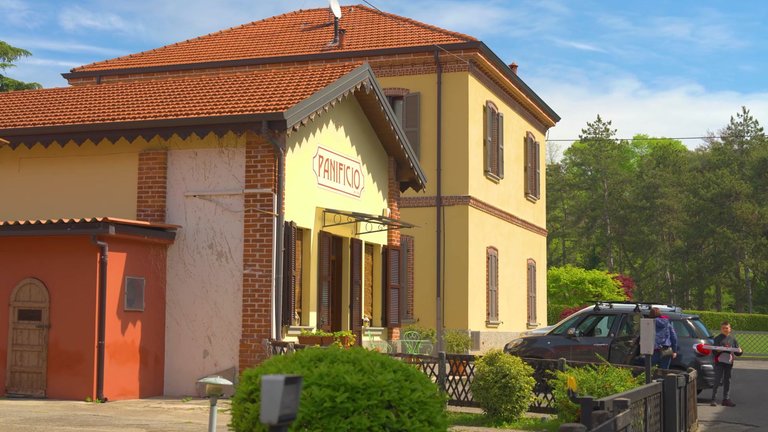
Originally this place served as a bread depot. Next to it there used to be a fruit shop, a dairy, a fabric store in the back and a general store. There was even a garage back then.
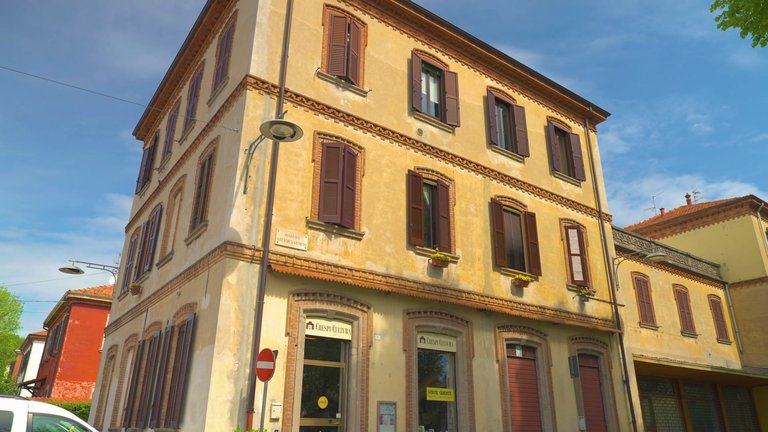
After the residential buildings were constructed, social facilities emerged in the village. Since the area was private, all the funding came from the Crespi family. Yes, while Crespi took care of the local children, he primarily viewed them as future responsible and reliable workers. Compared to their peers, the children here were quite happy. All children attended kindergarten and working mothers left their toddlers at daycare. At a time when education in Europe was far from accessible to everyone, Crespi believed that every child in his ideal city should have the opportunity to learn.
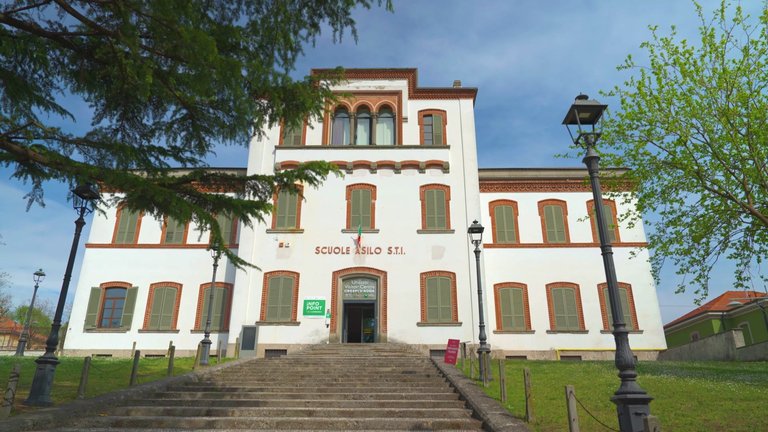
This was limited to primary education. Initially three grades, later expanded to four. Still the most talented students could earn scholarships to vocational schools in larger cities, eventually pursuing good careers at the Crespi factory.
There was plenty to do after school and work. The town orchestra rehearsed, girls joined the home economics club, plays were performed in the theater and soon, cinema was added to the entertainment options. The building housing the public baths also featured a swimming pool, where boys loved to dive during holidays. All of these amenities were free for the villagers. School supplies and meals in the cafeteria were also provided free of charge.
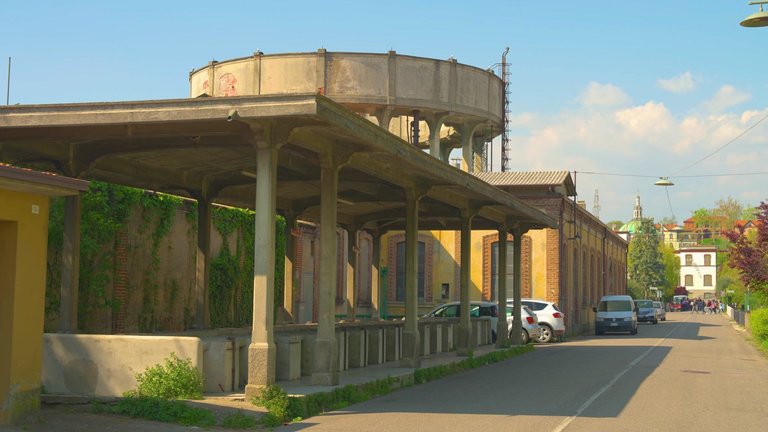
I stumbled upon a restaurant called Dopolavoro, meaning After Work. But since my day was just starting, I decided to grab breakfast at a nearby bar. During Crespi's time Dopolavoro served as a city club. Workers gathered here for meetings, to chat with friends or to participate in sports teams, amateur theater and cultural evenings. Of course, some stopped by the bar on the first floor for another drink. However, Crespi imposed his own rules: hard liquor was banned and the bartender determined when someone had enough to drink. Usually no more than two glasses.

Interestingly these restrictions didn’t apply to guests staying at the hotel across the street, which was built for factory clients and suppliers, not tourists.
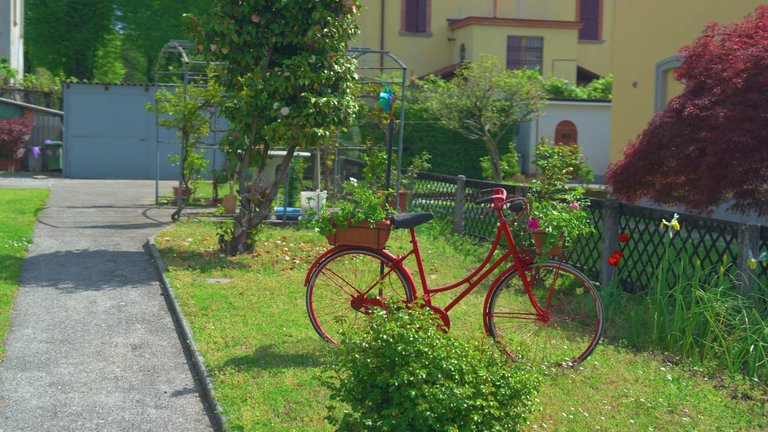
The factory itself consisted of single-story buildings, covering nearly half of the village. Its appearance was designed by architects Ernesto Pirovano and Gaetano Moretti, representatives of Milan’s early 20th century modern school. They combined elegance and simplicity in a functional structure, adding Art Nouveau floral motifs.
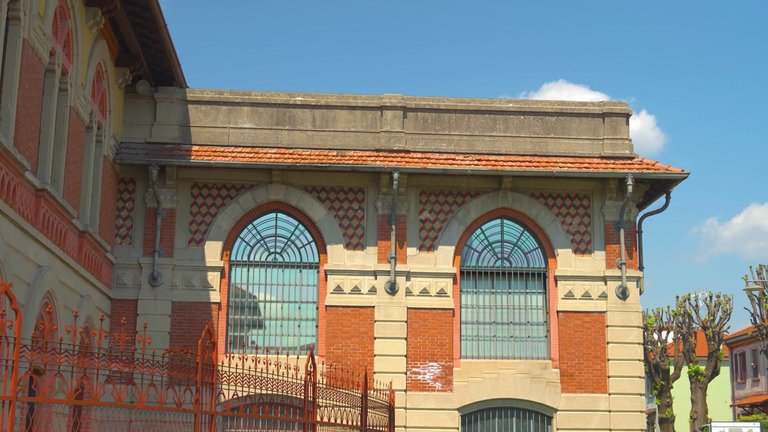
This blend of styles suited Crespi's taste. Terracotta decorations, Gothic windows and Renaissance-style carved stones still adorn the building. Above it all a chimney soars 70 meters high, featuring intricate wrought-iron floral designs. Dominating the town’s skyline, this brick tower symbolized the dawn of a new era, where factories shaped the silhouette of cities instead of churches. Originally there were three chimneys, but one was struck by lightning and destroyed. Later a major fire broke out in the factory, engulfing cotton warehouses. In response Crespi invited a professional firefighting team and had a barracks built nearby.

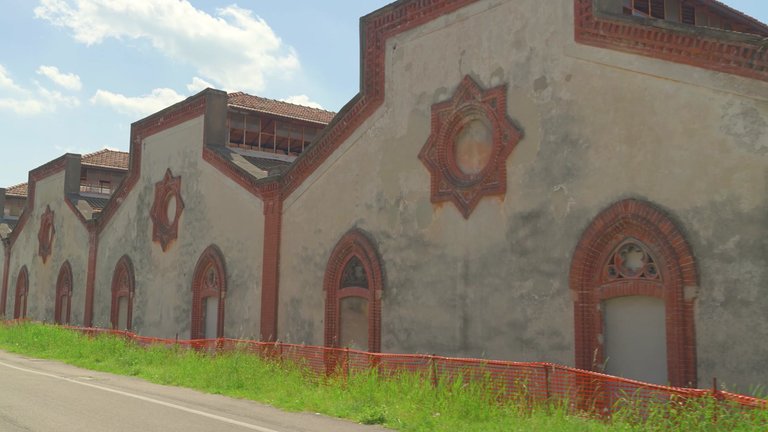
The same architects later constructed a hydroelectric power plant on the Adda river, increasing the factory’s capacity. From the terrace, you can not only admire the town’s view but also appreciate the immense effort required to develop the engineering structures along the Adda river. The village was also the first in Italy to have public electric lighting. The wires, still strung above the houses, have not been moved underground as in other towns.
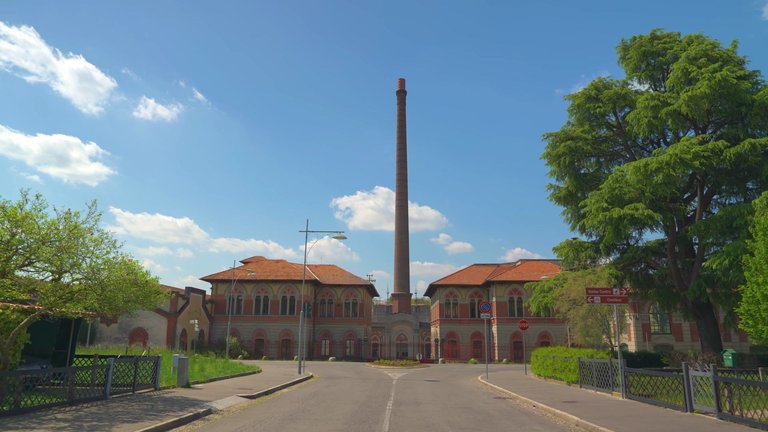
Heading to the southern part of the settlement, you’ll find larger and more sophisticated houses among the greenery. These homes were still not for individuals but were designed for three families each. This is where craftsmen lived. Social equality was not on the agenda. Amid gardens full of flowers stood villas for supervisors, engineers and the director. Each villa had its own style, with decorative elements, balconies, protrusions and terraces.
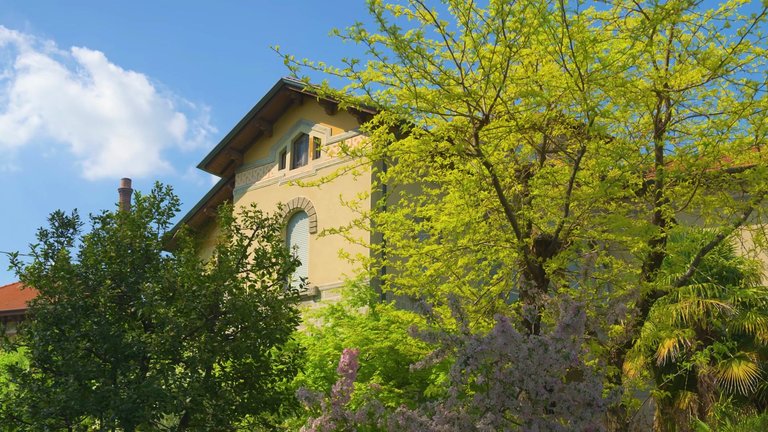
Crespi valued skilled managers but kept their luxurious homes away from the workers, placing them at the edge of the forest outside the village.
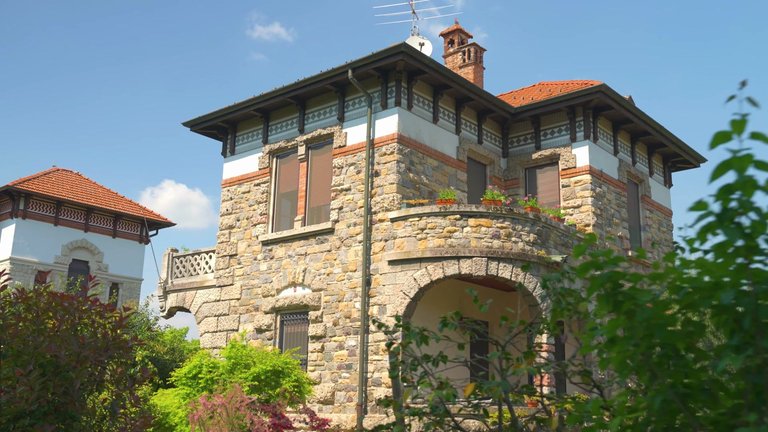
Two individuals played special roles in village life: the parish priest and the doctor. Their villas overlooked the other houses, as if watching over the villagers from above. One cared for their souls, the other for their bodies. It’s said their duties included monitoring the general mood of the village, as worker communities could be volatile. The doctor lived in a white house with a shortcut through the gardens, allowing quick access to his work.
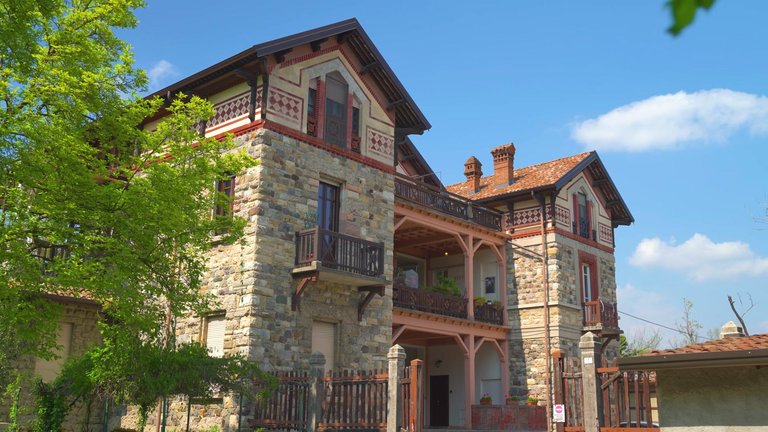

Silvio Crespi published a book on reducing workplace accidents and injuries. The village doctor was highly qualified and the dispensary, located opposite the factory entrance, was equipped with X-ray machines and the latest emergency care tools. In severe cases Crespi himself intervened, calling specialist doctors from Milan or Bergamo. Meanwhile, the wives of Christopher and Silvio Crespi visited sick villagers, offering them encouragement and support.
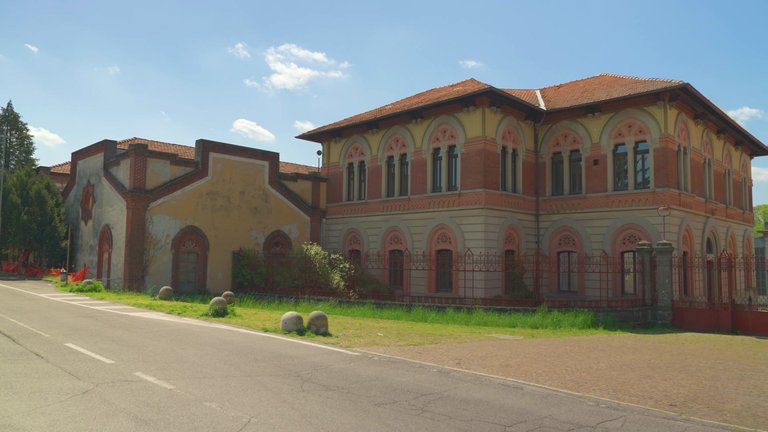
Christopher Crespi came from Busto Arsizio, a town with a famous 16th century church designed by Bramante. To honor his hometown, he built a replica of that church here. Even the services in the church were synchronized with the factory’s schedule, starting at 6:30 am before the workday. No one considered sleeping in back then. From his castle, Crespi could watch the service without leaving home. The terrace provided a clear view of the church’s open doors, even the altar.
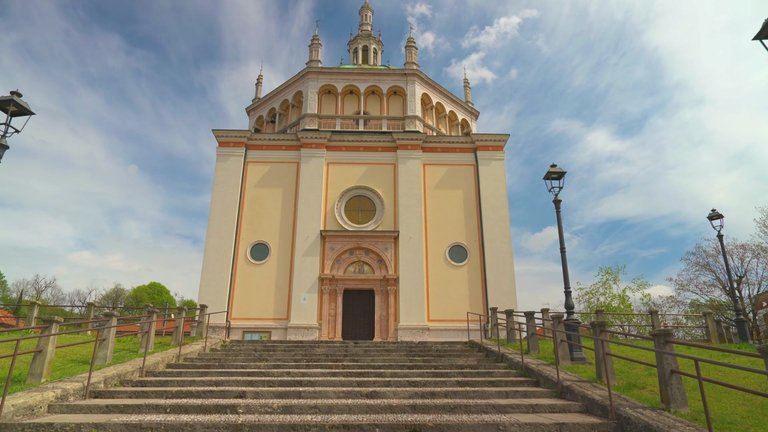
Christopher Crespi was like a stern but caring father to his workers, deeply invested in their well-being. But he didn’t forget himself. To avoid the hassle of traveling from a villa in central Milan, he built a structure resembling a small castle. With towers, gargoyle decorations and 44 rooms, the eclectic mansion was completed in just 12 months. A 40 kilometer telephone line connected his castle office to Milan for quick problem-solving.
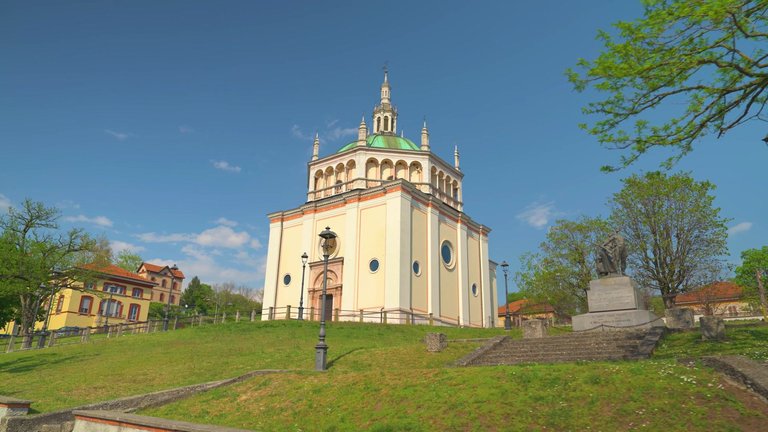
One morning Christopher Crespi was surprised to find a bust erected in his honor at the factory gates. Being modest, he found it strange to build a monument to a living person. However, the villagers and workers assured him it was a heartfelt gift to express their gratitude.
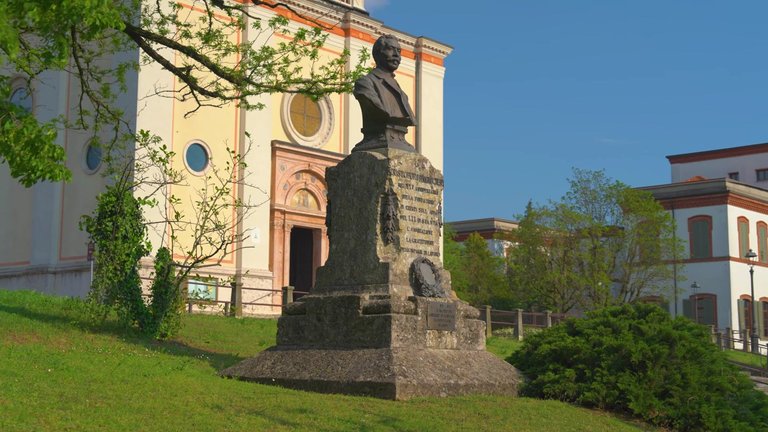
Crespi’s ideas were indeed revolutionary. From birth to death, workers were fully provided for. A perfect example of skilled, forward-thinking industrial organization. Over 50 years of factory operations, there were no strikes or unrest. Even as dissatisfaction spread across Europe, Crespi villagers strolled through tidy streets to their palace-like factory, feeling fortunate.
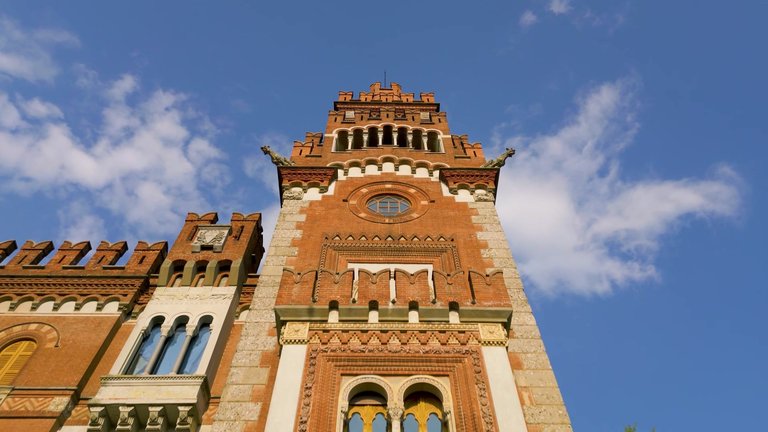
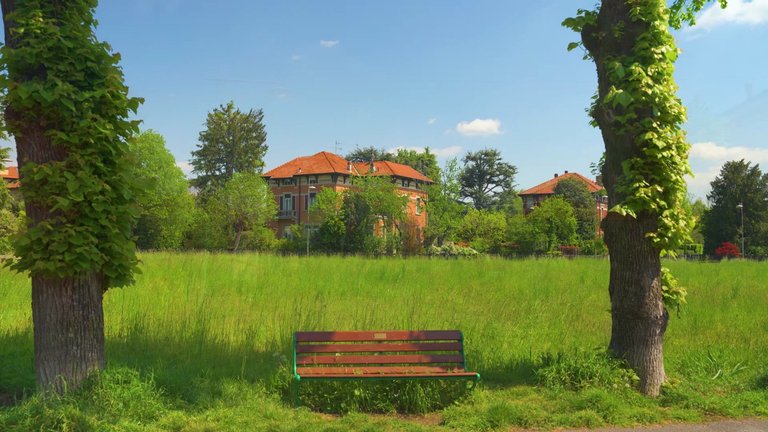
The Crespi family stayed with their workers in life and death. Their enormous mausoleum is visible from afar. As you approach the city cemetery, the grandeur of this monument grows, evoking reverence. The pyramid-shaped mausoleum symbolizes the unity of factory owners and workers.
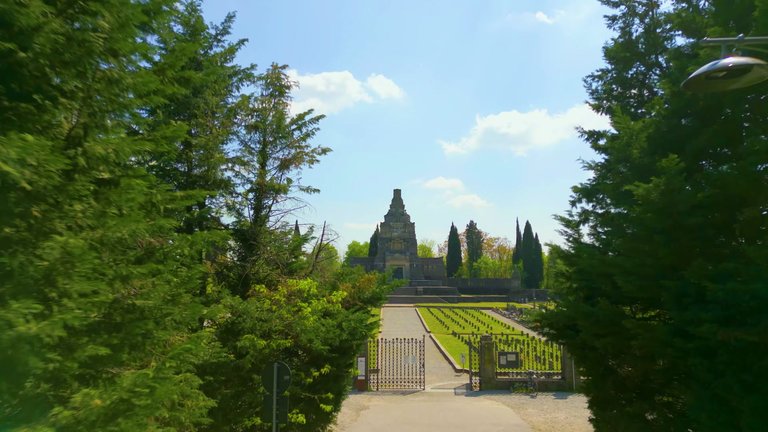
Sadly the village faced financial difficulties in later years. Christopher’s youngest son unlike his brother, lived extravagantly, losing vast sums in casinos and bets. After Christopher’s death, Silvio struggled to manage his brother’s debts and global crises. By the second half of the 20th century, the factory declined and closed permanently in 2003.
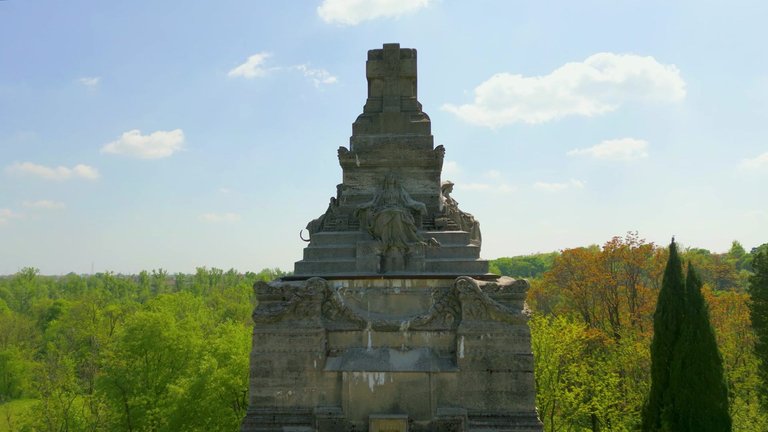
Yet, its chimneys still rise above the town and descendants of those who once won the golden ticket of working at Crespi's factory continue to live in its colorful homes. Walking through these green streets, you might feel as if you’ve traveled back a century, visiting a unique utopian town.
Thank you for exploring this remarkable place with me.
Travel Digest #2439.
Become part of our travel community:
- Join our Discord
Hiya, @lizanomadsoul here, just swinging by to let you know that this post made it into our Top 3 in Your post has been manually curated by the @worldmappin team. If you like what we're doing, please drop by to check out all the rest of today's great posts and consider supporting other authors like yourself and us so we can keep the project going!Thank you 😍
Keep up the great work 💪
Hi, I'm also learning photography - I liked your photos. 👍
Thanks so much! I'm glad you liked them. Good luck with your photography journey 😍
You can check out this post and your own profile on the map. Be part of the Worldmappin Community and join our Discord Channel to get in touch with other travelers, ask questions or just be updated on our latest features.
Congratulations @annativa! You have completed the following achievement on the Hive blockchain And have been rewarded with New badge(s)
Your next target is to reach 900 upvotes.
You can view your badges on your board and compare yourself to others in the Ranking
If you no longer want to receive notifications, reply to this comment with the word
STOP